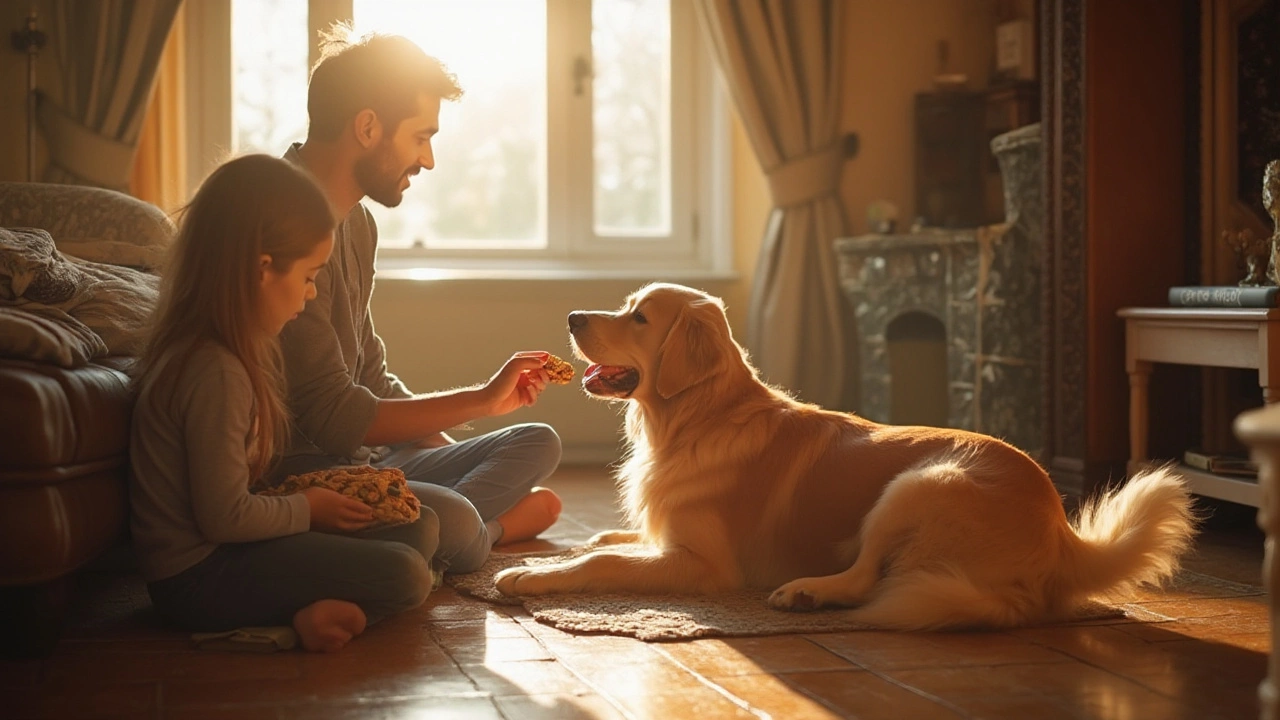90/10 Rule for Dogs – Simple Guide to a Balanced Diet
Ever wonder why some pups look great while their owners keep offering endless biscuits? The secret is often a simple math trick called the 90/10 rule. It means 90% of your dog’s daily calories come from complete, balanced food and the remaining 10% can be treats, training rewards, or occasional human‑food snacks. Stick to the ratio and you’ll see fewer weight spikes, happier digestion, and more energy for play.
Why 90% Food, 10% Treats Works
Commercial dog foods are formulated to hit every vitamin, mineral, and protein need. When you feed that as the core of the diet, you give your dog a solid nutritional foundation. Treats, on the other hand, are usually richer in fats or sugars and don’t contain the full nutrient profile. By limiting them to a small slice of the total daily intake, you avoid overloading calories while still getting the training and bonding benefits treats provide.
Most vets agree that a 10% treat allowance keeps the risk of obesity low. For a mid‑size dog eating 800 kcal a day, 10% is just 80 kcal – roughly two bite‑size biscuits. That tiny amount can still reinforce good behavior without messing up the overall diet.
Putting the Rule into Practice
Start by checking the label on your dog’s main kibble. It will list the recommended daily amount in cups or grams. Calculate 90% of that amount – that’s what you’ll actually put in the bowl. The rest of the recommended serving becomes your treat budget.
Here are three easy ways to stay on track:
1. Measure, don’t guess. Use a kitchen scale or measuring cup each morning. It takes a few seconds and prevents accidental over‑feeding.
2. Choose low‑calorie treats. Freeze‑dried liver, small carrot sticks, or commercial treats labeled “low‑calorie” let you give more bites for the same calorie count.
3. Track special foods. If you’re sharing a piece of cooked chicken or a spoonful of peanut butter, count those calories just like regular treats.
Remember, the 90/10 rule isn’t a rigid law; it’s a flexible guideline. If your dog is a high‑energy working breed, you might need a slightly higher food percentage. If you’re feeding a senior with a slower metabolism, you may drop the treat share even lower.
One practical tip: keep a small notebook by the food storage area. Jot down the daily food amount and any treats given. After a week you’ll see patterns, and adjusting becomes a breeze.
Finally, don’t forget water. Even if you nail the calorie math, dehydration can hide behind weight gain. Fresh water should be available at all times.
Stick to the 90/10 rule, keep an eye on portion sizes, and you’ll give your dog the best chance to stay fit, focused, and ready for whatever adventure comes next.

Understanding the 90/10 Rule in Effective Dog Training
The 90/10 rule in dog training is a concept that emphasizes the importance of consistent and rewarding interactions between dogs and their owners. This principle states that 90% of training should be based on positive reinforcement while the remaining 10% can involve the correction of undesirable behaviors. By focusing largely on positive actions and behaviors, you nurture trust and strengthen the bond with your pet. This approach is scientifically backed and encourages a cooperative relationship rather than a combative one.
View more